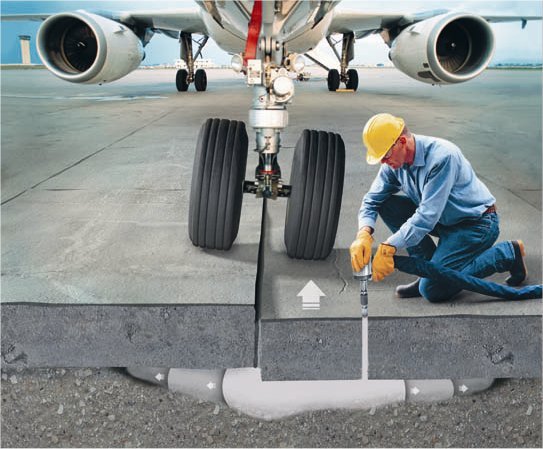Airport construction projects offer complex challenges that require meticulous planning and execution to ensure smooth operations. One crucial aspect that often goes overlooked is the control of on-site “foreign object debris” and the prevention of “foreign object damage”, both of which are referred to by the acronym “FOD.”
Construction is a messy process that naturally produces a variety of debris, such as gravel, asphalt chunks, stray pieces of hardware, fasteners, wood, dropped tools, materials drift, personal items, and small rocks embedded in vehicle tires.
Suggested Resources
Check out our articles on how to prevent FOD at your airport or how to set up a FOD Program at your airline for more great ideas.
Airports construction contracts typically includes clauses requiring the contractor to control FOD on the job site. This is because allowing debris to enter flight areas, can create critical safety issues. For example, a piece of loose hardware that migrates from a job site onto a runway might blow a tire during takeoff operations, resulting in a damaged aircraft and, quite possibly, injuries to passengers and crew.
In this article, we will explore effective airport debris removal strategies to control construction debris and minimize its impact on airport operations.
Guidelines for FOD Removal in Construction of Airports
More specifically, foreign object debris refers to any loose object, debris, or material that could pose a threat to personnel and equipment. Similarly, foreign object damage refers to the specific harm that debris causes to personnel or equipment.
The Federal Aviation Administration recognizes FOD prevention as a critical safety issue, offering critical advisory documents such as “Airport Foreign Object Debris (FOD) Management.” This circular outlines the importance of FOD management at airports and provides specific strategies to mitigate risk, such as performance standards for airport sweeping equipment.
For instance, it recommends creating FOD prevention procedures early in the planning process, before actual construction takes place. This is especially true for job sites that will be located close to operational areas or in areas subject to high winds.
Additionally, the FAA’s “Standard of Specifications for Construction of Airports” focuses specifically on construction practices, including detailed instructions on which stages of a given project requires the crew to inspect and remove debris.

“FOD is often more common when airports begin construction activities.”
— FAA, “Airport Foreign Object Debris (FOD) Management” pg 7.
Compliance with Waste Management Guidelines
Think of your FOD prevention procedures as part of your overall waste management plan.
The International Civil Aviation Organization (ICAO) provides valuable guidance on waste management in their “Waste Management at Airports” booklet. Adhering to these guidelines reduces the environmental impact of construction activities and ensures proper disposal of waste materials.
Promoting construction and demolition waste recycling is another effective measure to minimize the environmental impact of airport construction. The City of Colville, Washington, provides a guide on airport waste recycling, emphasizing the benefits of recycling construction and demolition waste.
Effective Equipment
Investing in a small inventory of cost-effective equipment will help to assure compliance while having minimal impact on your project’s budget.
 Temporary fencing or other wind barriers can catch debris before it blows out of the job site. Keep in mind that even in low-wind environments, nearby aircraft engines typically create powerful winds of their own.
Temporary fencing or other wind barriers can catch debris before it blows out of the job site. Keep in mind that even in low-wind environments, nearby aircraft engines typically create powerful winds of their own.
Drivers that need to cross into airport operational areas may need to stop and remove any small pebbles embedded in their vehicle’s tires. A simple “FOD Picker” hand tool, or even an awl or screwdriver, can be used to clean the treads.
The FOD Control Corporation offers a range of solutions and strategies Our colorful FOD signs, for example, can be strategically placed to remind construction workers and airport staff to remain vigilant and dispose of debris properly.
For the efficient collection of surface debris, the FOD-Razor® Airport Sweeper comes in a compact size and offers maneuverability that make it ideal for navigating construction sites.
Where loose metallic hardware is of primary concern, our Tow-Behind Power Bar® utilizes a powerful magnetic force to attract and pick up ferrous metal debris.
Safety First
Preventing foreign object debris from impacting airport operations during construction is vital for the safety and efficiency of aviation activities. Implementing effective strategies, utilizing FOD control equipment and complying with waste management guidelines are essential steps toward achieving this goal.
As airport construction projects continue to evolve, it is crucial to prioritize FOD prevention and apply sustainable practices to ensure the long-term success of airport operations.
